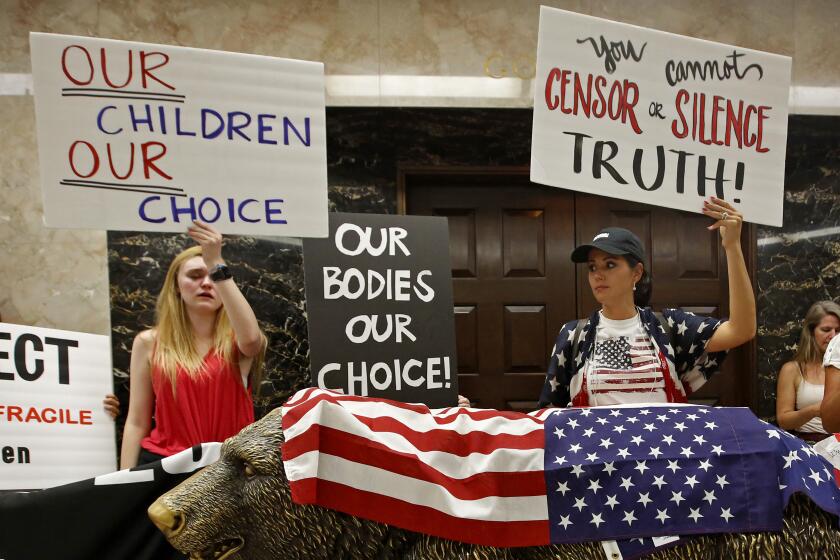Dioxin, Agent Orange: THE FACTS by Michael Gough (Plenum: $17.95; 300 pp.)
- Share via
There are two standard procedures, toxicology and epidemiology, for evaluating the human hazards of toxic chemicals, particularly the induction of chronic disease, cancer (carcinogenicity) and birth defects (teratogenicity). Toxicology is based on testing such chemicals on experimental animals as human surrogates, and epidemiology is based on the post hoc analysis of their effects on exposed humans.
The predictive utility of toxicology reflects a vast body of data on the similar metabolic and biochemical patterns of widely dissimilar mammalian species, including humans, and on their similar responses to toxic chemicals. Illustratively, the human carcinogenicity of a wide range of chemicals was first predicted by toxicological tests, and virtually all recognized human carcinogens are also carcinogenic in experimental animals.
Epidemiology is based on the analysis of morbidity and mortality data over several decades in substantial human population groups with defined past exposures. The inherent limitations of epidemiology are illustrated by the many decades of multimillion-dollar research, involving millions of humans with defined smoking histories, which were necessary before causal associations between smoking and lung cancer could be established to all except the tobacco industry.
Industry routinely undertakes toxicological tests on its products and submits negative data to regulatory agencies as proof of safety. The major strategy for dealing with awkward positive data, destruction and suppression, is to challenge their human relevance and to insist on unequivocal confirmatory epidemiological evidence. However, as recently documented by Karstadt and Selikoff at Mt. Sinai, New York, industries capable of undertaking such epidemiological studies have demonstrated an extreme, Catch-22 reluctance to do so for alleged difficulties, including economic.
These perspectives are helpful to an appreciation of “Dioxin, Agent Orange: The Facts” by Michael Gough. Gough claims that there is little or no substantial evidence incriminating dioxin, as a contaminant in Agent Orange and in its major ingredient, the herbicide 2,4,5-T, as well as in its precursor trichlorophenol, as a cause of systemic disease, cancer or birth defects among exposed individuals or populations, including Vietnam veterans, herbicide workers, and communities contaminated by herbicide use or residential proximity to herbicide manufacturing plants or hazardous waste disposal sites.
Gough’s exculpatory tactics are superficially plausible, though often strained. These include denigrating and misrepresenting the significance and human relevance of the overwhelming toxicological and carcinogenicity data on dioxin, dismissing positive findings in heterogeneous epidemiological studies for reasons including apparent lack in their internal consistency, and alleging a virtual scientific consensus supporting his position.
Such distortion is illustrated by the omission from Gough’s extensive bibliography of the 1985 EPA Health Assessment Document for Dioxin, probably the most comprehensive and authoritative document on the subject by about 36 national and international qualified scientific experts. The EPA document concludes that dioxin is the most powerful carcinogen ever evaluated, in fact, about 50 million times stronger than the recognized highly potent occupational carcinogen vinyl chloride, and that “epidemiology studies--have produced positive findings that are suggestive of an elevated risk in humans.”
Gough’s qualifications in molecular biology--but not in toxicology, teratology, carcinogenesis, epidemiology and medicine, which are the main themes of his book--afford a tenuous basis for his assumed mantle of authority. These comments also seem appropriate for his uncritical support, while previously employed at the Office of Technology, of a contracted report by two British epidemiologists alleging that, contrary to published U.S. data, there has been no recent increase in U.S. cancer rates, and also that exposure to occupational carcinogens is a minor cause of cancer.
While of minimal scientific merit, Gough’s book is likely to be useful to dioxin defense attorneys, his current employers at the Risk Science Institute of the International Life Sciences Institute in Washington (a chemical industry think tank), and also his future industrial clients.




